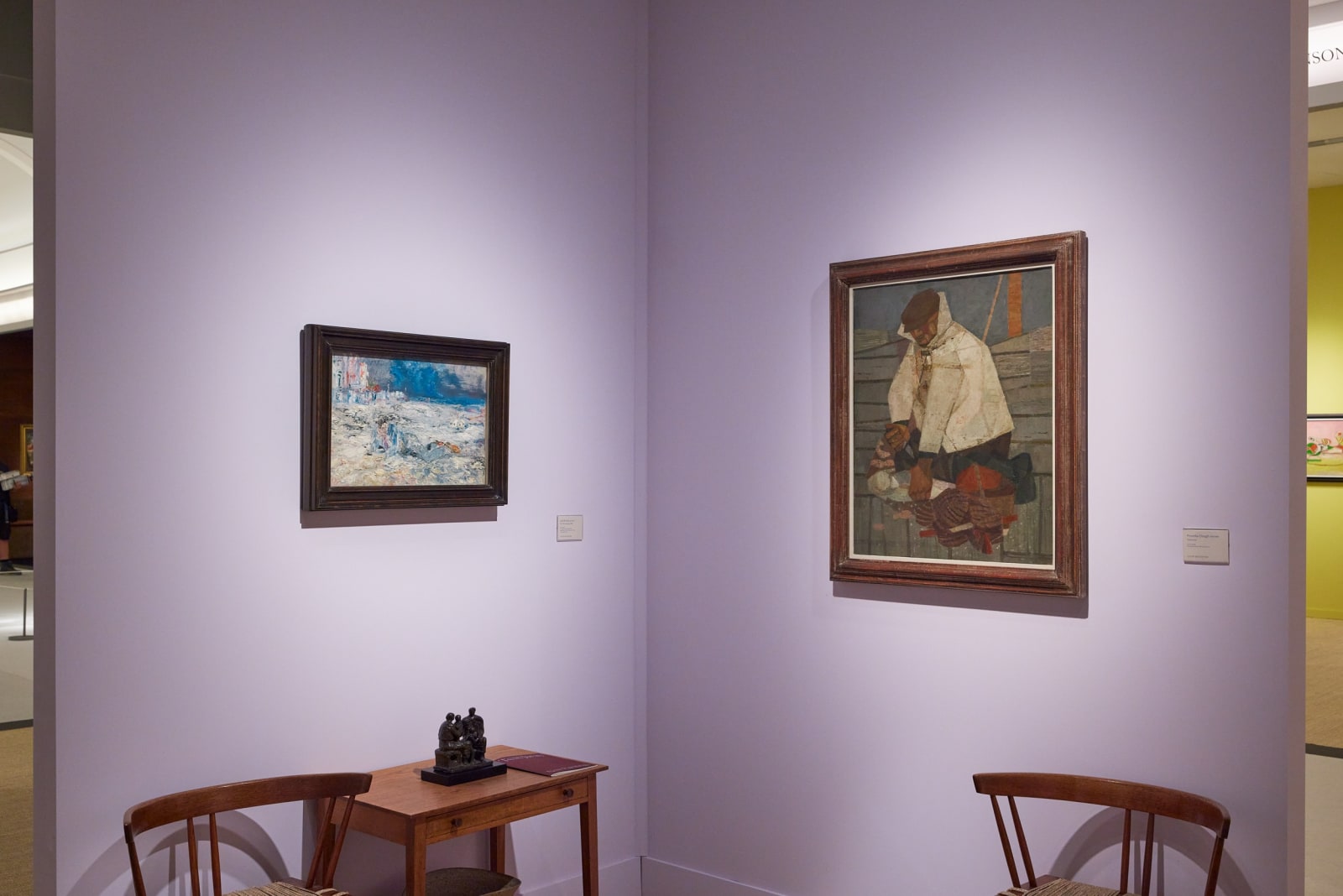Jack B Yeats 1871-1957
The Tide Receding, 1946
oil on canvas
14 1/8 x 21 1/8 inches
36 x 53.5 cm
36 x 53.5 cm
signed ‘Jack B/Yeats’; titled on the reverse on the stretcher bar
It was only when in his 70s that Jack B. Yeats achieved the eminence he had long deserved. Two years after being elected as a member of the ‘London Group,’...
It was only when in his 70s that Jack B. Yeats achieved the eminence he had long deserved. Two years after being elected as a member of the ‘London Group,’ in 1942, a joint exhibition of work by Yeats and William Nicholson (organised by Kenneth Clark) opened at the National Gallery, which served to raise the artist’s profile dramatically not only at home, but abroad. Consequently, Yeats gained the attention of important figures such as the well-respected art critic Herbert Read, John Rothenstein – then director of the Tate Gallery, and gallerist Victor Waddington, marking the beginnings of an artist-dealer relationship that was to become central to Yeats’ rising career and reputation after his death. 1 2 Later, in 1945, the artist received a major retrospective at the National College of Art, Dublin, and, in 1946, the year the present work was painted, he received an Honorary Doctorate from Dublin University.
For an artist fascinated by life’s transience, it is unsurprising that the tide held great appeal. Here, in this highly romantic scene, a man in a suit reclining languidly on a beach wistfully watches the tide recede, apparently unaffected by the turbulent storm that looms threateningly on the horizon. Caught in a moment of introspection, this central, solitary figure might symbolise Yeats, or the viewer, and evokes universal, existential ideas about the very human desire to search for meaning and purpose in life. As Samuel Beckett has observed, ‘Yeats is with the great of our time… because he brings light, as only the great dare to bring light, to the issueless predicament of existence.’ 3
Alive with expressive, almost impressionistic mark making, The Tide Receding exhibits a wonderfully varied surface. While the majority of the composition is made up of paint layered impasto with a palette knife, in other areas paint has been applied dry and sparsely so that the canvas is still visible. The artist also appears to have used the handle of his brush or the edge of his palette knife to carve certain details, such as the man’s facial features and the flagpole, into the paint.
Yeats’ late works have been described as ‘a marvellous finale to an already rich artistic life’,4 and, demonstrating a masterful and elaborate interplay of techniques, The Tide Receding articulates this assertion beautifully.
1 Yeats had no official gallery representation before Waddington took him on in 1943
2 Victor Waddington (1907 – 1981) founded the Victor Waddington Galleries in Dublin in 1927 and went on to establish the Waddington Galleries in Cork Street, London in 1958, with his son Leslie
3 Anthony Cronin, Samuel Beckett: The Last Modernist, Harper, 1997
4 T.G. Rosenthal, The Art of Jack B. Yeats, Andre Deutsch, London, 1993, p41
For an artist fascinated by life’s transience, it is unsurprising that the tide held great appeal. Here, in this highly romantic scene, a man in a suit reclining languidly on a beach wistfully watches the tide recede, apparently unaffected by the turbulent storm that looms threateningly on the horizon. Caught in a moment of introspection, this central, solitary figure might symbolise Yeats, or the viewer, and evokes universal, existential ideas about the very human desire to search for meaning and purpose in life. As Samuel Beckett has observed, ‘Yeats is with the great of our time… because he brings light, as only the great dare to bring light, to the issueless predicament of existence.’ 3
Alive with expressive, almost impressionistic mark making, The Tide Receding exhibits a wonderfully varied surface. While the majority of the composition is made up of paint layered impasto with a palette knife, in other areas paint has been applied dry and sparsely so that the canvas is still visible. The artist also appears to have used the handle of his brush or the edge of his palette knife to carve certain details, such as the man’s facial features and the flagpole, into the paint.
Yeats’ late works have been described as ‘a marvellous finale to an already rich artistic life’,4 and, demonstrating a masterful and elaborate interplay of techniques, The Tide Receding articulates this assertion beautifully.
1 Yeats had no official gallery representation before Waddington took him on in 1943
2 Victor Waddington (1907 – 1981) founded the Victor Waddington Galleries in Dublin in 1927 and went on to establish the Waddington Galleries in Cork Street, London in 1958, with his son Leslie
3 Anthony Cronin, Samuel Beckett: The Last Modernist, Harper, 1997
4 T.G. Rosenthal, The Art of Jack B. Yeats, Andre Deutsch, London, 1993, p41
Provenance
The Artist
Reeves Levanthal, USA, 1946, acquired directly from the above
Private Collection, New York
Private Collection, UK, 1991
Estate of Patrick Kelly



